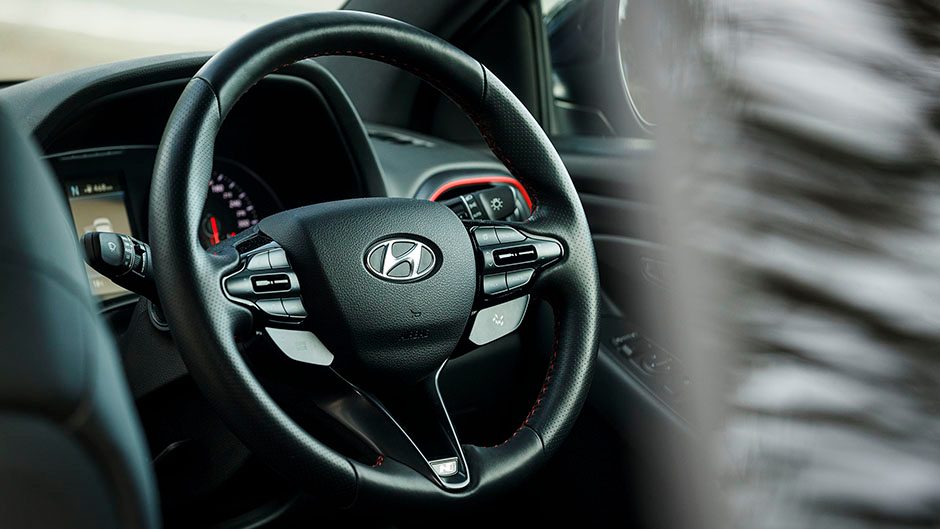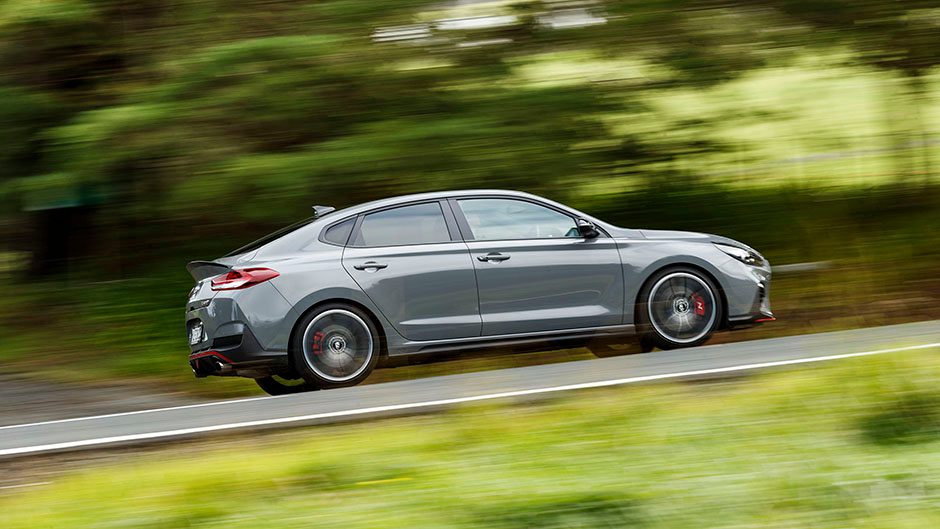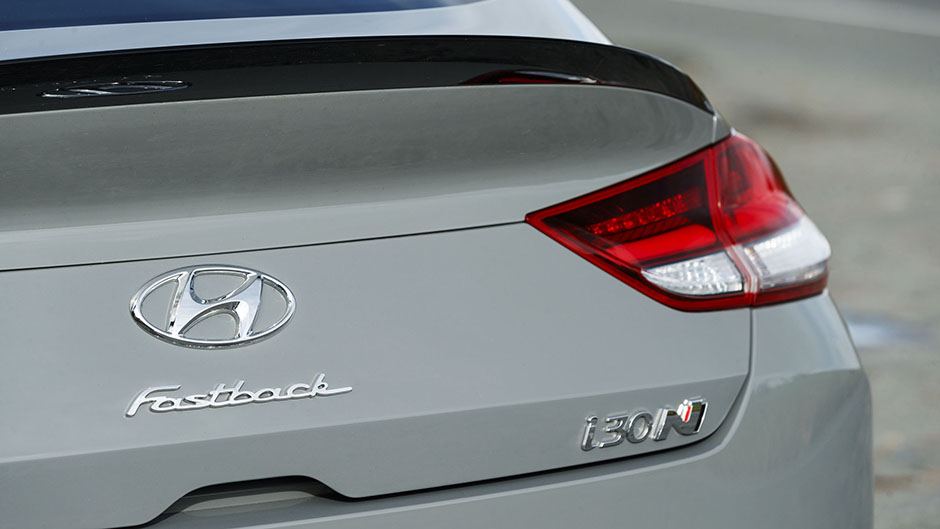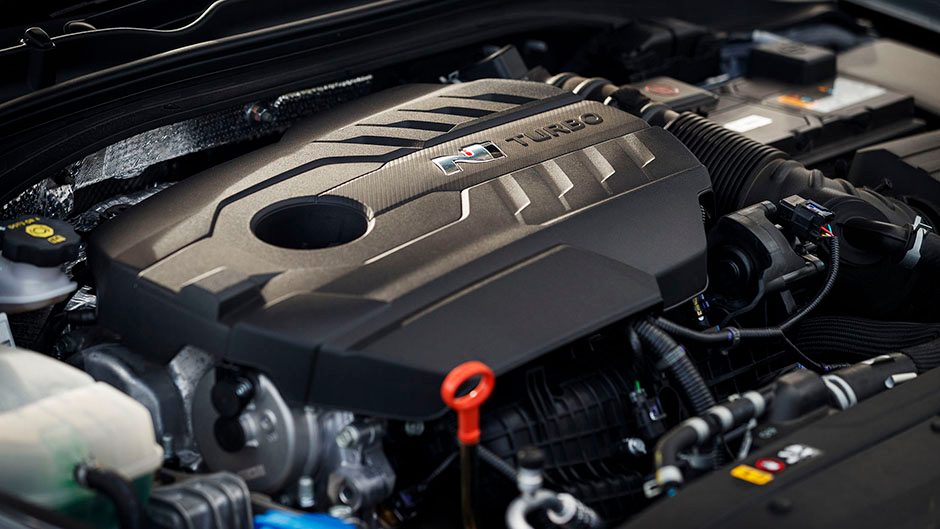That’s pretty much what both Paul initially and Kyle thought when the hot hatch arrived here. Now there’s a new i30 N model, the Fastback.
Quite why they’ve done this version is a bit hard to fathom. For, like the hot hatch, it’s a five-door, only a liftback. So it’s a bit longer and lower, has a touch more luggage space 436L vs 387L, but headroom and the rearward view aren’t as good. There’s no ugly wash wipe unit to mar the lines either.
So it’s all about appearances then? Largely. Mind you, it seems to have worked. Our flatmate wondered what the flash car was in the driveway. And people admired its fetching grey paint job.

To the differences then. The FB is longer (by 120mm) at 4455mm, and not quite so tall by 28mm, plus it gets a sunroof and hence the reduction in headroom. Moreover, it costs $59,990 for the six-speed manual (an eight-speed twin-clutch is here Q1 next year). That makes it $5k more expensive than the hatch, worth it if you need the extra space, the reduced head clearance (sorry, the sunroof) and the added elegance.
Know this though; the Fastback is every bit the blaster that the hatch is and it’s a perfectly fine everyday car as well. Adaptive dampers see to that. Ride quality is firm but entirely fair in the Normal mode, firming further in Sport and the customisable N mode. Also boning up is the steering heft while there’s a bit more noise from the exhaust and in the cabin too. Not that it’s enough to drown out the din on chipseal from the PZero rubber. It’s part of the price you pay for dazzling dynamics.
But what a buzz this is to helm, stiffer than the donor car and benefitting from more go and an electronically-controlled mechanical LSD (dubbed N Corner Carver!). This can bind a bit on full lock at slow speeds, but more than compensates in corners. There’s little in the way of torque tug either. In the Sport modes, the car corners in level fashion and it grips assiduously, especially up front, so there’s little understeer to combat. On the way out of the corner, you can hit the gas early, the power is grounded and you’re simply out of there. ESP Sport keeps intervention to a minimum.

As to performance, there’s little difference in weight from the hatchback, around 1500kg, and the powertrain, the top Performance version of the 2.0-litre turbo, stumps up with an identical 202kW and 378Nm on overboost. So you’d expect the same acceleration figures (claimed 0-100 of 6.1sec).
Being manual, turbocharged and front-wheel driven, this is a challenge to performance test, especially on regular chip seal. Our ex-editor cried quits at 7.3sec, but he may have overlooked the fact that this has launch control; you just don’t expect that on a manual.
Anyhow, after a couple of attempts, it was clear that pig rooting in first was holding it back. So short-shifting into second we were instantly into the sixes, ending with a best of 6.2sec. That’s much the same as KC got for the hatchback.

People who don’t understand or drive manuals don’t know what they’re missing. The throw is a shade long but the clutch take-up point is precise, and you can rush changes both directions without the mechanism baulking.
Round town this tools happily below 2000rpm but for hasty progress in a rural setting you really need 3500rpm showing and there the switch flicks, running hard to the 6300 limiter but 5000rpm is plenty, so the next gear hooks up where the engine is still on the boil. The cackles from the exhaust add to the drama.
Hyundai rates this as track ready and we imagine that’s the case. With ESP off (after performance testing we forgot to re-engage), the rear unloads in progressive fashion, the first time it did this a surprise. ESP sport though keeps everything in line, without nobbling progress. Corner speeds are up there with the best front drivers in the business.

At this price we’d have expected active cruise, and BSM, perhaps head-up display. But there are seven airbags, lane keeping, driver fatigue alert, and AEB, along with heated and powered sports seats and wheel, easy entry, a phone charge pad, shift lights, autodipping, and some nice sporty highlights inside.
This is a sexy addition to the hot hatch and just as competent but is not without serious competition, the new Focus ST priced exactly the same.
| Model | Hyundai i30 N Fastback | Price | $59,990 |
| Engine | 1998cc, IL4, T/DI, 202kW/378Nm | Drivetrain | 6-speed manual, front-wheel drive |
| Fuel Use | 8.0L/100km | C02 Output | 186g/km |
| 0-100km/h | 6.18 | Weight | 1512kg |


